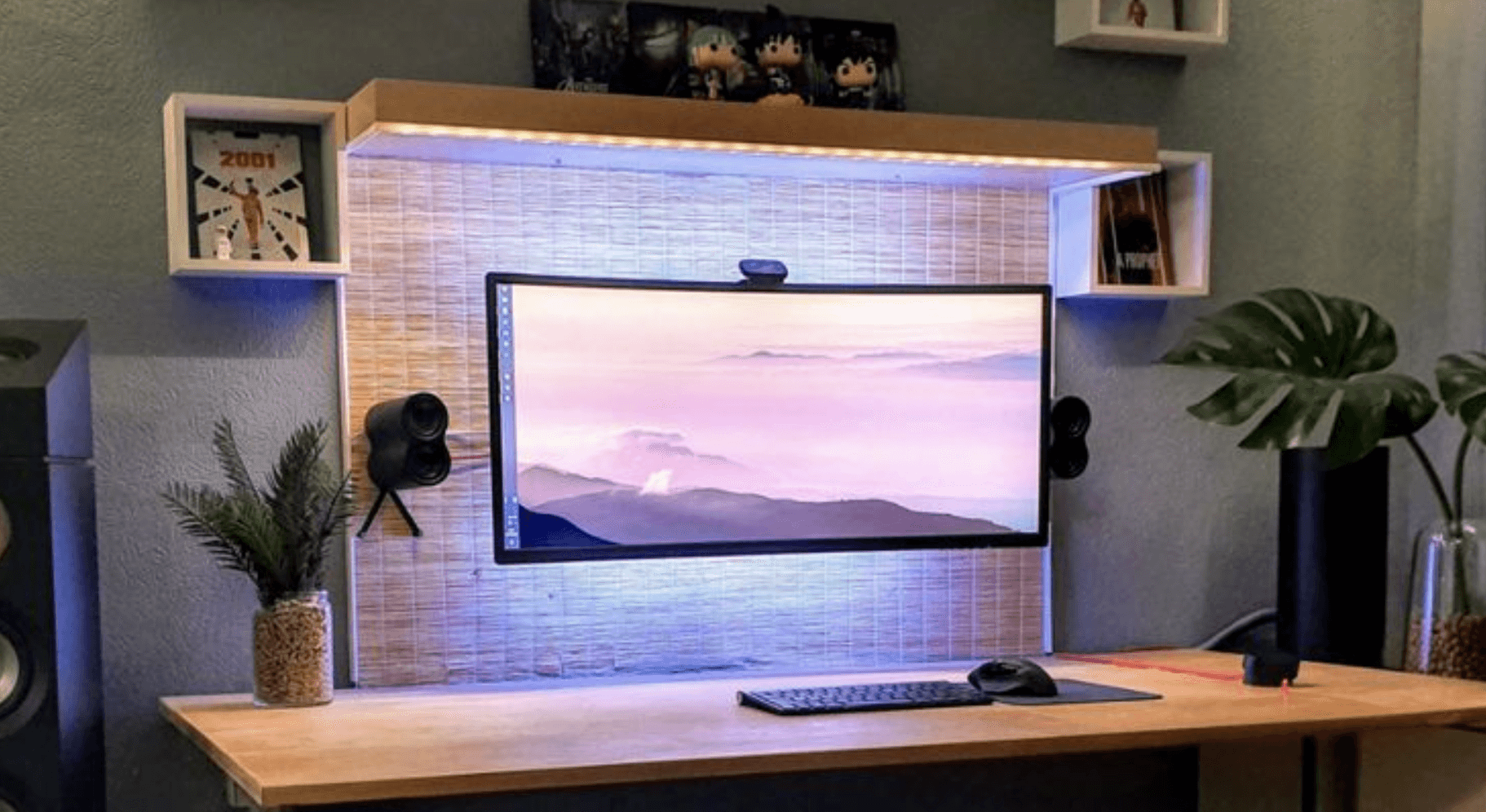How to Wall Mount a Monitor and Save Space Like a Pro
In the previous years, monitors took up far less space, but they still sometimes got in the way. Also, it can be a little frustrating to know the perfect location for your monitor. You want to have a clean and efficient workspace, and knowing how to wall-mount a monitor is the first step.
When you’re setting up your monitor and other devices, placement is a big factor to consider. Whether you're figuring out how to wall mount a monitor or choosing the right baby monitor with a screen and app for your child, the goal is always space efficiency.
Things to Consider Before You Wall Mount a Monitor
When mounting a monitor to a wall, you need to consider some things to ensure that they are placed perfectly.
- Size and weight of the screen
The size of the monitor and its weight are crucial for the holder. If you do not know the size, you can easily measure your monitor. Measure the screen from bottom left to top right, measure only the glass and not the case. Divide the result by 2.54. Round the result, and you now have the size of your monitor. The weight can be found either in the product specifications or on the website of the manufacturer, or you can simply place the monitor on a scale. Record the size and weight.
- The VESA standard of the screen
The VESA standard is a guideline for fixing screens, such as for mounting. If you do not know your VESA standard, you need to turn over your screen and check the back side. You will see four threaded holes. Measure the horizontal and vertical hole distances from center to center. Now you have your VESA recording. You can read more about “Determining Your Own VESA Standard. However, if your monitor does not have VESA recording, you can use a VESA adapter.
- Ensure that you install your monitor and mounting on a wall with a flat surface
- Check that the wall material and the standard wall mount bracket are stable enough to support the weight of your monitor.
- You can also remove the monitor stand by laying the screen face down on a clean and well-padded surface. Detach the stand from the monitor while pressing and holding the quick-release button.
- Remove the screws on the back cover. Use a cross-pointed screwdriver to release the screws on the back cover
- Use four M4 x 10 mm screws to fix a VESA standard wall-mount bracket to the monitor. Check that all the screws are tightened and secured properly
Tools and Materials You’ll Need
Prepare all the needed tools and equipment you need for the work. By gathering what you need, learning how to wall-mount a monitor will be much easier and hassle-free.
- Monitor mount
- Screwdriver set
- Hammer drill and bits
- Spirit level
- Screws and wall anchors
- Stud finder
- Measuring tape
Step-by-Step Guide: How to Wall Mount a Monitor
Installing a monitor wall mount takes more time and effort. You also need a lot of patience. Follow these steps to learn exactly how to wall-mount a monitor safely:
- Figure out the height you want for your monitor.
- Using your stud finder, find a stud behind the drywall for the mount. In some stud finders, you just press a single button and slowly swipe across the wall until you find a stud for the mount. The stud finder will light up when it finds the center of the stud and will alert you if any electrical wires are nearby.
- Mark the center of the stud with a pencil. Some stud finders have a built-in pencil, which makes marking easy.
- Use the level to draw a vertical line down the wall, using your center point mark, in the area you want to install the mount.
- Mark the holes necessary for drilling. Use the level to align the pattern and mark the holes using a pencil.
- Drill the holes using a hammer drill.
- Screw the mount to the wall. You may need to attach washers to the three lag screws and tighten. Use the level to ensure the mount is still level before continuing.
- Tighten the screws completely to ensure a perfect fit against the wall.
- Attach VESA mounts to the back of your monitor.
- Slip a monitor onto the plate at the end of each arm. Secure each with a screw or bolt, depending on what your mount requires.
Benefits of Wall Mounting a Monitor
Mounting monitors on the wall offer a number of benefits. Here are some:
- It reduces strains on the neck and shoulders
Many users set their monitors too high, too low, or far away, which could lead to unnecessary back or shoulder pain. It can also strain your eye if the monitor is too close or too far away from you. Mounting your monitor on the wall can be the perfect solution.
When you raise your head and look at the monitor on the wall, your upper and lower cervical vertebrae do not have to rotate as much, and the weight of your head is equally distributed amongst your neck extensor and muscles, both in the front and in the back. The ideal position for a wall-mounted monitor is to have your line of sight aligned with the upper edge of the monitor.
- It saves space
Mounting your monitor on the wall is not only efficient, it also makes more space for workspace. If you have a table with a laptop, installing the monitor on the wall provides you a significant amount of space.
- It is aesthetically pleasing
A wall-mounted monitor can minimize how much of your cables and wires are exposed which makes your workspace look clean and tidy.
Can All Monitors be Mounted?
Can all monitors be mounted? The answer is yes. All monitors can be mounted. Most monitors today have mounting plates on the back. Even older monitors that don’t have mounting plates on the back can still be mounted. You just need to look for a mount that attaches to the sides or bottom in order to secure it in place.








